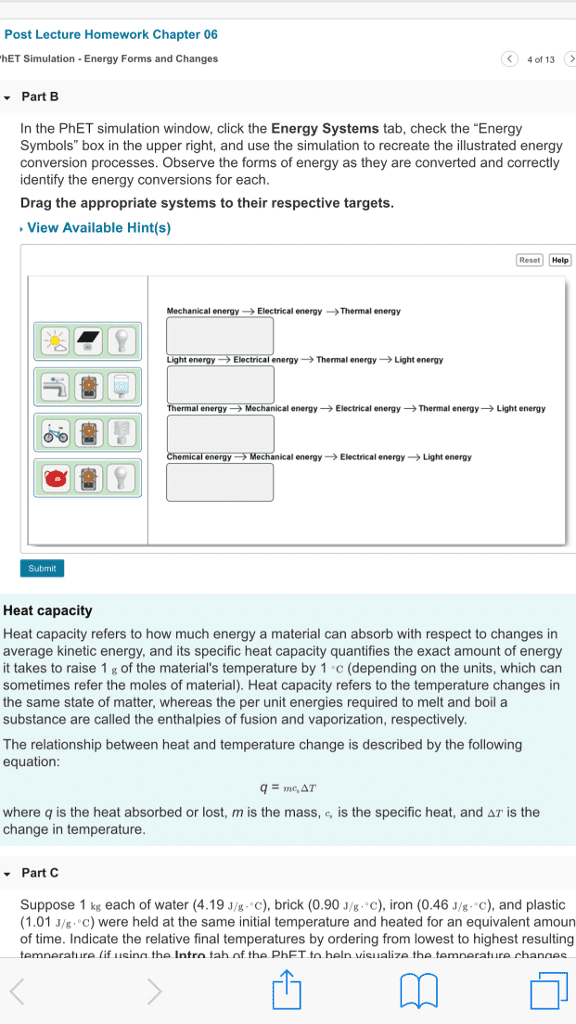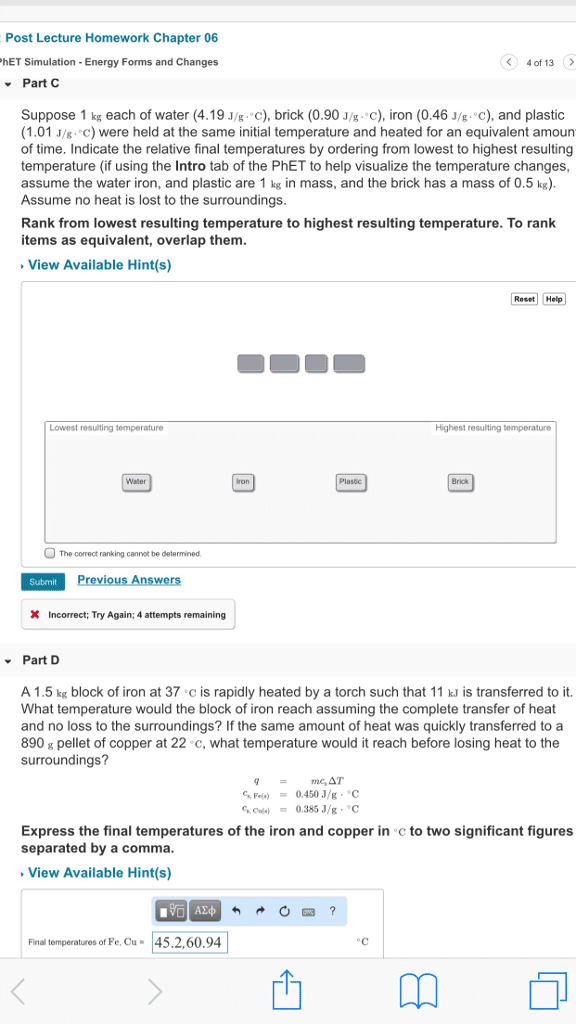CHEM 1033 Chapter Notes - Chapter 5: Heat Capacity, Thermal Energy
113 views2 pages
25 Jul 2017
School
Department
Course
Professor
Document Summary
Thermal energy is kinetic energy associated with the random motion of atoms and molecules. Temperature is a (cid:395)ua(cid:374)titati(cid:448)e (cid:373)easu(cid:396)e of (cid:862)hot(cid:863) o(cid:396) (cid:862)(cid:272)old. (cid:863) Heat (q) is the transfer of thermal energy between two bodies at different temperatures. Historically, energy was measured in units of calories (cal). A calorie is the amount of energy required to raise one gram of water by 1-degree c. the si unit of heat, work, and energy is the joule. A joule (j) is defined as the amount of energy used when a force of 1 newton moves an object 1 meter. We now introduce two concepts useful in describing heat flow and temperature change. The heat capacity (c) of a body of matter is the quantity of heat (q) it absorbs or releases when it experiences a te(cid:373)pe(cid:396)atu(cid:396)e (cid:272)ha(cid:374)ge (cid:894) t) of 1 degree celsius (or equivalently, 1 kelvin):
Get access
Grade+20% off
$8 USD/m$10 USD/m
Billed $96 USD annually

Homework Help
Study Guides
Textbook Solutions
Class Notes
Textbook Notes
Booster Class
40 Verified Answers
Class+
$8 USD/m
Billed $96 USD annually

Homework Help
Study Guides
Textbook Solutions
Class Notes
Textbook Notes
Booster Class
30 Verified Answers
Related textbook solutions
Chemistry: Structure and Properties
2 Edition,
Tro
ISBN: 9780134293936
Basic Chemistry
5 Edition,
Timberlake
ISBN: 9780134138046
Principles of Chemistry Molecular Approach
4th Edition,
Tro
ISBN: 9780134112831
Principles of Chemistry Molecular Approach
3rd Edition, 2014
Tro
ISBN: 9780321971944
Chemistry: Structure and Properties
2nd Edition,
Tro
ISBN: 9780134293936
Chemistry: A Molecular Approach
3rd Edition,
Tro
ISBN: 9780321809247
Chemistry: A Molecular Approach
5th Edition,
Tro
ISBN: 9780134874371
Principles of Chemistry: A Molecular Approach
4th Edition,
Tro
ISBN: 9780134895741
Chemistry: The Central Science
14th Edition, 2017
Brown
ISBN: 9780134414232

